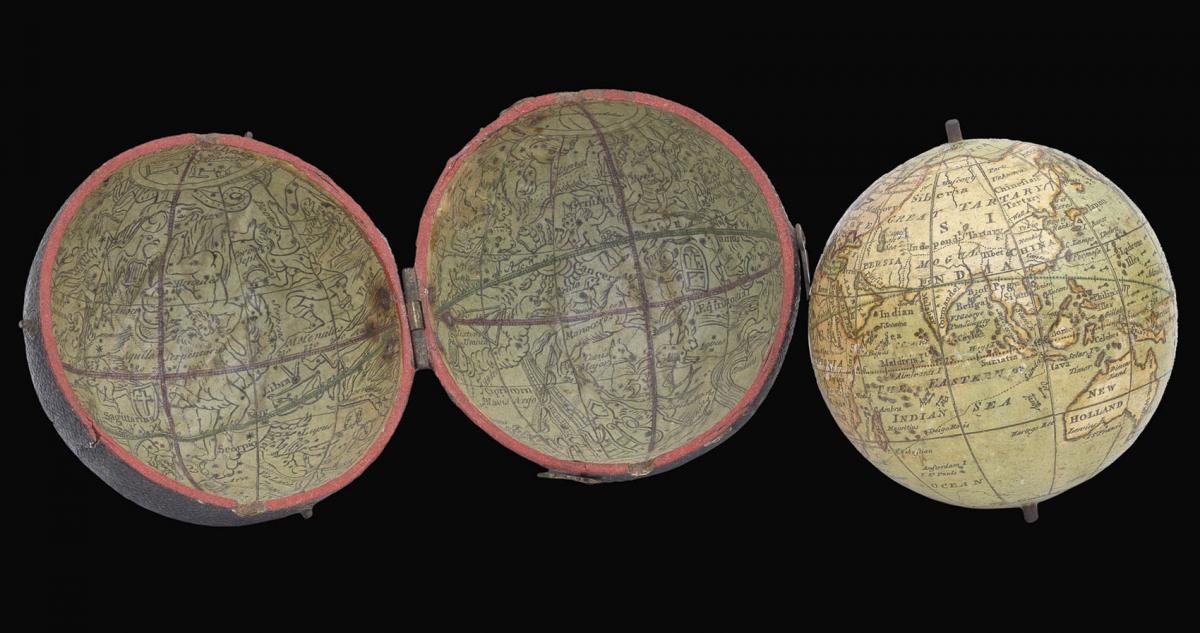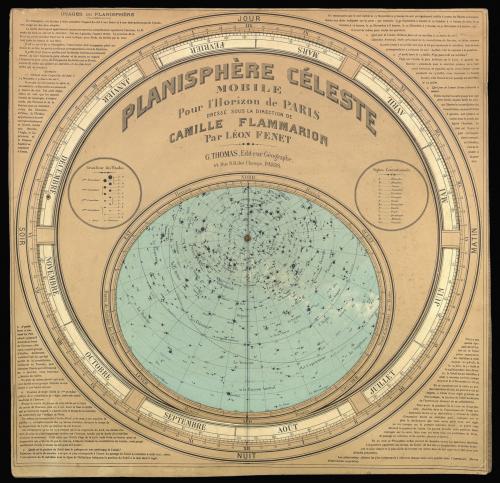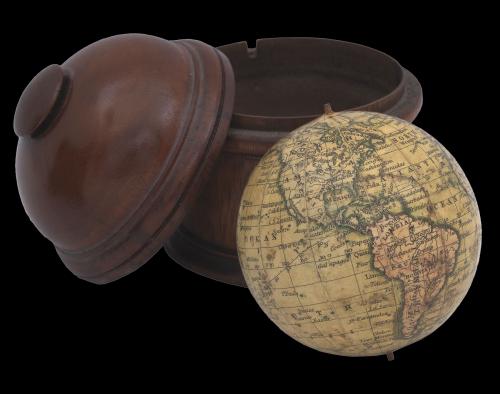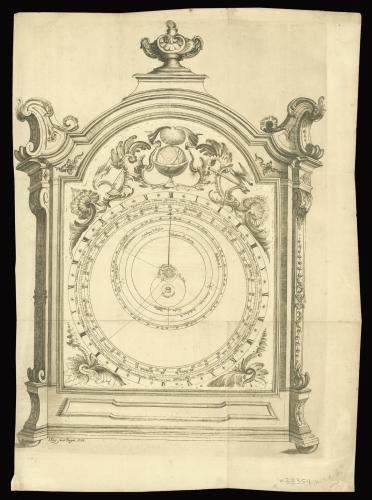

Price
£6200.00This object is eligible for a Certificate of BADA Provenance
The BADA Standard
- Since 1918, BADA has been the leading association for the antiques and fine art trade
- Members are elected for their knowledge, integrity and quality of stock
- Our clients are protected by BADA’s code of conduct
- Our dealers’ membership is reviewed and renewed annually
- Bada.org is a non-profit site: clients deal directly with members and they pay no hidden fees
Title A New Terrestrial Globe by J. Newton 1800
Author NEWTON, John
Publisher J. Newton
Publication place London
Publication date 1800
Globe, 12 hand-coloured engraved paper gores, clipped at 65 degrees latitude, with two polar calottes, over a papier mâché and plaster sphere, varnished, housed in original shagreen over paste-board clamshell case, rim painted red, with hooks and eyes, lined with two sets of 12 hand-coloured engraved celestial gores, varnished. A few areas of abrasion to the surface of the globe, celestial globe gores buckling in one or two places.
Notes
The cartography reflects an updated version of Newton's first pocket globe of 1783, which, in turn, was an update of Nathaniel Hill's 1754 pocket globe.
Biography
During the first half of the nineteenth century the firm of Newton, together with Bardin and Cary, occupied a leading position in the manufacture of globes in London. The firm was established by John Newton in 1783 and operated originally from the Globe & Sun 128 Chancery Lane, moving to 97 Chancery Lane in 1803, before settling at 66 Chancery Lane in 1817.
John Newton (1759-1844) was trained by Thomas Bateman (fl1754-81), who had previously been apprenticed to Nathaniel Hill (fl1746-1768). Newton's first globe was a revised edition of Hill's 1754 pocket globe, which he published in 1783 in association with William Palmer. The partnership dissolved shortly after, and Newton continued to publish the pocket globe under his own name. John's second son William Newton (1786-1861) joined the firm between 1814-1816, which traded under the name J. & W. Newton. In the same year the firm produced a new series of globes, including a new pocket globe.
By the 1830s the firm was also active as a patent agent and was joined by Miles Berry, a civil engineer and patent agent, after which the firm was known as Newton, Berry & Son. In 1842, William's eldest son, William Edward Newton (1818-1879), joined the business, followed by his brother Alfred Vincent Newton (1821-1900). The firm became known as W. Newton & Son, or once again, on the death of William, as simply Newton & Son from 1861 until about 1883.
Perhaps the greatest triumph for the Newton family was the Great Exhibition of 1851, where, aside from the globes they exhibited from 150 to 635mm (1 to 25 inches) in diameter, they were awarded a prize medal for a manuscript terrestrial globe of six feet in diameter.
Geography
The coastline of the Pacific northwest of America has been updated to show "Nootka", following the Nootka Crisis of 1790; in Canada what was formerly referred to as "Unknown Parts" now shows the "Mackenzie River", named after the Scottish explorer Alexander Mackenzie. The fur trapper had followed the river up in 1789 to try and reach the Pacific Ocean; finding the Arctic Ocean instead, he had named the river "The River of Disappointment" in frustration before it was renamed after him. The Cary brothers were the first to publish a pocket globe with the discovery in 1798, but Newton's globe of 1800 also predates Mackenzie's own maps of his findings in 1801.
Astronomy
The celestial cartography lining the inside of the case follows Hill's globe of 1754 with astronomical details shown on a geocentric projection. Stars are represented by symbols, but a magnitude table is lacking. The Milky Way is labelled. The 48 Ptolemaic constellations and four of the non-Ptolemaic constellations are drawn. There are four of the southern constellations as well as those of Plancius and all those of Hevelius.
Dimensions
Diameter: 70mm (2.75 inches)Stock number
15664The BADA Standard
- Since 1918, BADA has been the leading association for the antiques and fine art trade
- Members are elected for their knowledge, integrity and quality of stock
- Our clients are protected by BADA’s code of conduct
- Our dealers’ membership is reviewed and renewed annually
- Bada.org is a non-profit site: clients deal directly with members and they pay no hidden fees




